The 7 Most Groundbreaking Games You’ve Probably Never Heard Of
Everyone knows that Super Mario Bros., Final Fantasy and Barbie’s Horse Adventures revolutionized the gaming industry. But not every influential game is a smashing success – some games quietly shaped industry trends despite being ignored by all but a few developers that recognized their innovation. You probably haven’t played the following games, but you owe them thanks for paving the way for those you have.
7. Kill Switch
Modern video game battlefields are littered with chest high concrete blocks and other seemingly random barriers, presumably put there by bored urban planners in the hopes that an intense firefight would break out and liven up their day. You have Kill Switch, a mediocre shooter that invented the modern cover system, to thank for this literal shift in the landscape.
Released in 2003 to a collective shrug from critics and fans, Kill Switch was later cited by the developers of Gears of War, Uncharted, Killzone and other series as an inspiration, which is a polite way of saying that they stole the cover system and built a less bland game around it. While technically not the first game to feature a cover system (see also: 1999’s WinBack), it was the first to make it a core gameplay component, and it also introduced the blind fire feature for gamers too wimpy to poke their head out and take proper aim. So the next time you’re chainsawing a locust in half or killing a zone (I haven’t played Killzone, but presume that’s what you do in it), remember that your experience was brought to you by some dumb game about a remote controlled super-soldier.
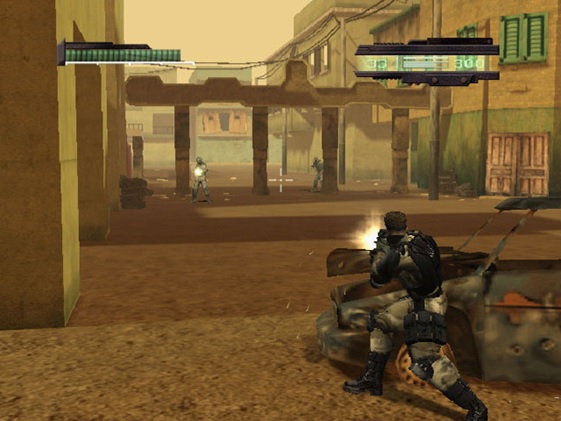 |
| “Back in my day, there weren’t no random slabs of concrete to take cover behind. You had to hope there was a car! You young punks have it easy.” |
6. Bokosuka Wars
Final Fantasy Tactics and its hipster equivalent, Tactics Ogre, are both classic strategy RPGs that served as the vanguard of a new genre for nerds who like to crunch numbers and look at grids. FFT popularized the genre, but the roots of its success were planted way back in 1983 by Bokosuka Wars.
Released on the Sharp X1, which sounds more like a Cold War spy plane than a personal computer, Bokosuka Wars didn’t make its way to North American shores until 2008, so it’s understandable if you haven’t heard of this one. You might therefore be shocked by just how much influence it had – Bokosuka Wars made its mark on everything from SRPGs to real time strategy games.
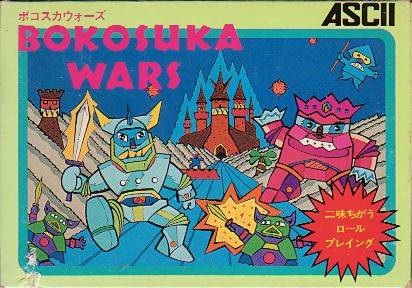 |
| And rad cover art. |
You start the game with a king and a smattering of knights and pawns, and you can rescue more troops as you soldier ahead. (In later versions of the game your forces have been turned into trees and rocks, so you have to bump into every bit of landscaping you see in the hopes it will magically transform into a knight, because Japan.)
You move your army across the battlefield, and if they come into contact with an enemy they fight a brief, automated battle. If they win, they gain experience and become stronger, while if they lose they’re dead forever. If you lose your king, you get one of the greatest game-over screens ever conceived:
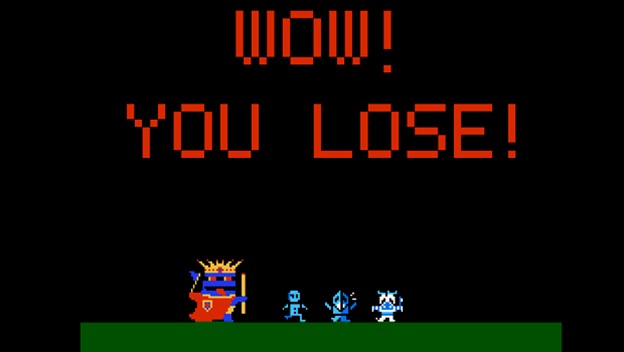 |
To say Bokosuka Wars hasn’t aged well is like saying Mario has rescued a princess or two in his day. It’s simplistic, your army moves like it’s stumbling home drunk from the bar, and battles are more luck than strategy. But the game was waaaaaay ahead of its time – the idea of leveling up characters of different classes (each one with its own special ability) and trying to outmaneuver your opponent on the battlefield is a concept you may have seen pop up one or two hundred times, and this weird little ’80s game was where it all started.
5. Utopia
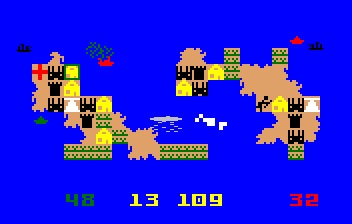 |
Utopia was released in 1981 on the Intellivision, a console that most people remember (if they remember it at all) for having a controller that resembled a phone. But in an era where Pac-Man was considered a complicated home console game, Utopia tasked gamers with building an island paradise. You needed to keep your population happy by developing infrastructure and your economy, while at the same time defending your island from pirates and rebels and funding rebel activity on your opponent’s island. You also had to deal with the vagaries of weather and roaming schools of fish because Utopia, like life, is random and cruel.
There was no AI opponent, because making a computer try to manage all that in 1981 would cause it to billow smoke and explode, so you either had to rope a friend into playing or compete against yourself, in the saddest definition of “Utopia” possible. The game was turn-based, and the default settings gave players a half-hour game – short for a modern strategy title, but a veritable epic for the Space Invaders era.
It’s not much to look at, but the gameplay holds up surprisingly well. It requires you to plan ahead and think strategically, not just rely on twitch reflexes like most of its contemporaries. That shift in thinking influenced games like Sim City, Civilization, and especially Tropico. Utopia was even included in the Smithsonian’s video game exhibition, so even if you somehow don’t believe my claim that it was influential, how can you argue with those guys?
4. Catacomb 3-D
Everyone’s heard of Doom, seeing as how it popularized the first person shooter genre and all. Hardcore gamers know that Doom was predated by Wolfenstein 3D, because who could forget fighting Mecha-Hitler? Less memorable was Catacomb 3-D, published in 1991 and developed by the same folks responsible for bringing you pixelated Nazis and the legions of hell.
Catacomb 3-D, part of the beloved “wizards and shit” genre, had gamers traversing, well, a catacomb, on a quest to defeat an evil Lich. You complete this noble adventure by wandering non-descript hallways and blasting fireballs at anything that gets in your way.
Anyone who’s played Doom will feel right at home watching that video – the layout and perspective are almost identical. The game lacks the mindless fun that Doom still has – you’re stuck with a single primary weapon, the game is a cakewalk, the music gets on your nerves and the sound effects sound like a mixture of computer glitches and farts. Nevertheless, it was hugely important – Catacomb 3-D introduced the idea of showing the character’s hand onscreen, and is arguably the first true FPS.
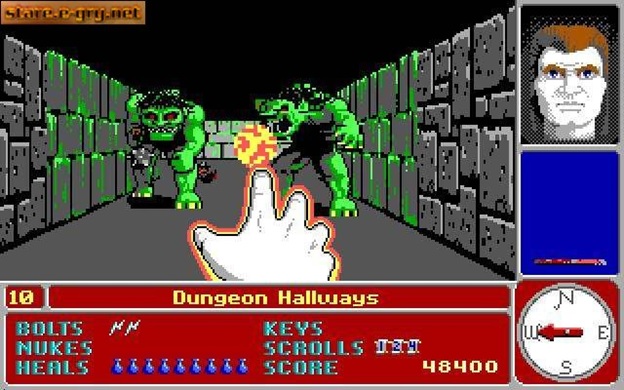 |
| It also influenced the level design of Halo. |
Also of note is Hovertank 3D, an even earlier game by the same developers. It’s a hideous, boring game, but the technical ideas were an important part of Catacomb 3-D’s development. Also, the sound effect when you rescue a civilian is amazing:
3. Wizardry: Proving Grounds of the Mad Overlord
Proving Grounds of the Mad Overlord sounds like the name of a tacky metal album, but it’s actually one of the most important RPGs ever made. The 1981 game, inspired by Dungeons & Dragons, introduced so many RPG staples that pretty much every title in the genre that came after it owes it a debt.
For starters, it was the first party-based RPG. So that’s important. It was one of the first PC games to offer color graphics, and in fact was one of the first games to offer graphics at all. And does this perspective look familiar?
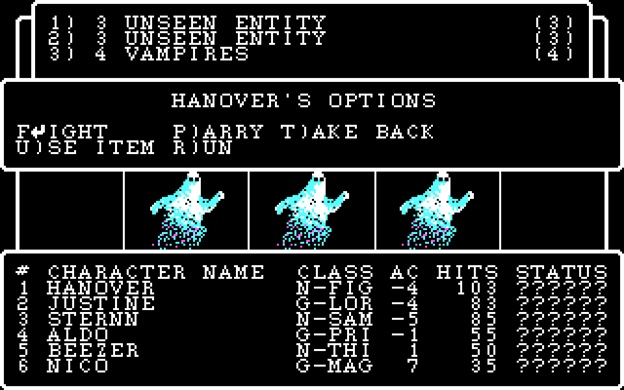 |
| Booooo! |
If you’ve ever played a Dragon Quest game, you recognize that layout. Wizardry was also an influence on Final Fantasy, as the game proved to be quite popular in Japan.
The next two games in the series formed a trilogy, and players could import characters from the original into the sequels. So one of Mass Effect’s big features is actually decades old. Okay, so Wizardry had a paper-thin story and characters with no personality, but still, it’s an impressive feature for 1981.
Later Wizardry games hold up okay, but I wouldn’t recommend checking out this one – it’s brutally hard. The game unfolds over 10 levels of a dungeon, and you can’t save unless you go all the way back to the start (which you’ll never find if you weren’t drawing a map, because one thing this game didn’t invent was the mini-map). And that’s a pain, because you’ll want to save a lot. Characters die often, and when they die they die for good. Hell, even features intended to make the game easier can kill you – you can learn a teleport spell, but if you enter the wrong destination you’ll teleport into solid stone and die. That’s one idea I’m sure we’re all glad later games didn’t copy.
2. Modem Wars
Dune II popularized the real time strategy genre, and before that Herzog Zwei more or less invented it. Both games were influenced by Modem Wars, a game that is sadly not about literal modems doing battle but does feature giant robots, so it’s still pretty cool.
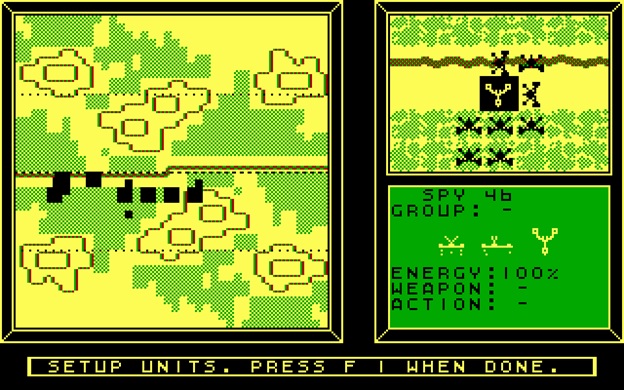 |
| Pictured: giant robots. |
As the name implies, Modem Wars was intended to be played online, although you could also take on a simple AI opponent. Lots of players had no choice but to do that, as many computer owners lacked a modem in the dark days of 1988 – one of the reasons the game’s success was limited.
The game was compared to football, if football involved literally murdering the enemy quarterback. Unlike most RTS games there’s no economic management: players simply plunk down a pre-determined number of units and get it on. The goal is to either destroy the enemy’s Command Center unit or get your own deep into their territory, scoring a violence touchdown. Or something. It’s not a perfect metaphor.
So, what concepts did Modem Wars introduce? Just varied unit types, terrain effects, formations, fog of war and game replays. Modem Wars was fast-moving and accessible in an era where other war games got bogged down in hardcore details, yet it still had impressive strategic depth that emerged as you grew more familiar with the game. Fast and easy to pick up, yet full of complexities for serious gamers… does that remind you of any successful RTS games?
1. Neverwinter Nights
First of all, this entry is about a game that came out in 1991, not the 2002 RPG. So don’t run down to the comments section and whine about how everyone’s heard of it.
Now then! When you think MMORPGs you think of World of Warcraft (and also creepily obsessive players, but that’s another topic). Before WoW became a juggernaut there was Ultima Online, an MMO that was launched in 1997 and is still played today. That’s the game that popularized a genre and eight hour marathon gaming sessions fueled by caffeine and dignity.
But Ultima Online owes its existence to Neverwinter Nights, the first MMORPG to feature these fancy things called “graphics.” Hosted by AOL, of all companies, Neverwinter Nights launched with servers that could host 50 people. Hot damn! That capacity eventually added a zero, and at its peak the game had about 115,000 players.
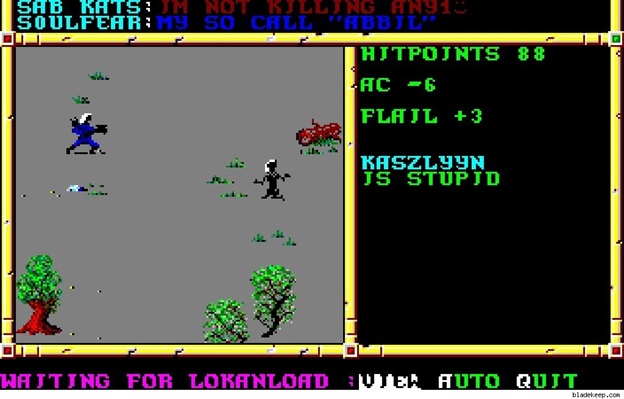 |
| And it didn’t take long for them to start insulting each other. |
That’s a far cry from World of Warcraft’s 9.6 million subscribers, but it was enough to prove the viability of the genre. As a game Neverwinter Nights was decent enough, but its real achievements lay elsewhere. Not only did it demonstrate that MMORPGs were technically viable, it proved their potential to both generate revenue and become popular social destinations. Players formed guilds, made friends and enemies, and built a community that outlived the game itself. If Neverwinter Nights hadn’t succeeded, who knows what the MMO landscape would look like today?
Also, some of its developers appeared in “Don’t Copy That Floppy,” so it’s got that going for it, too.
